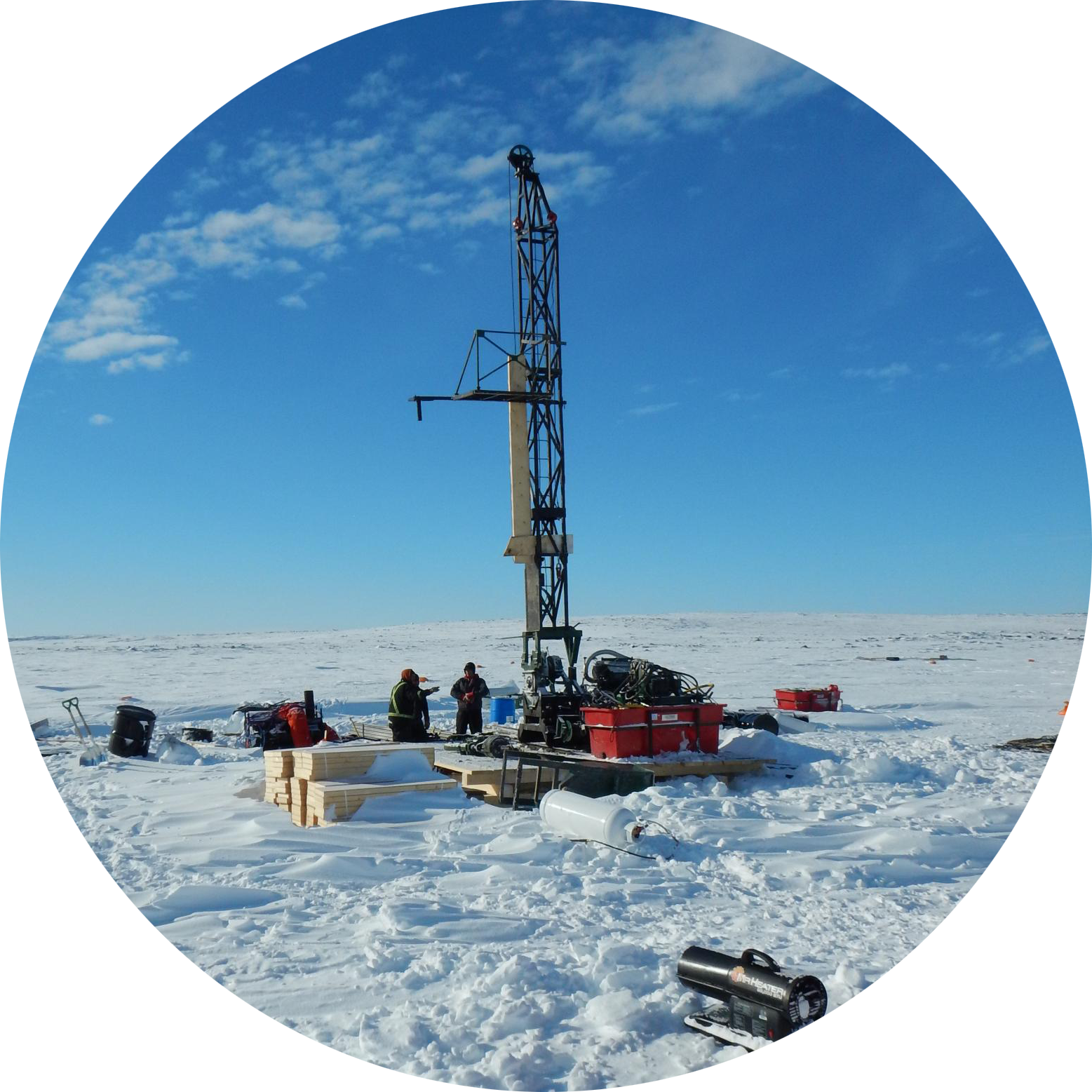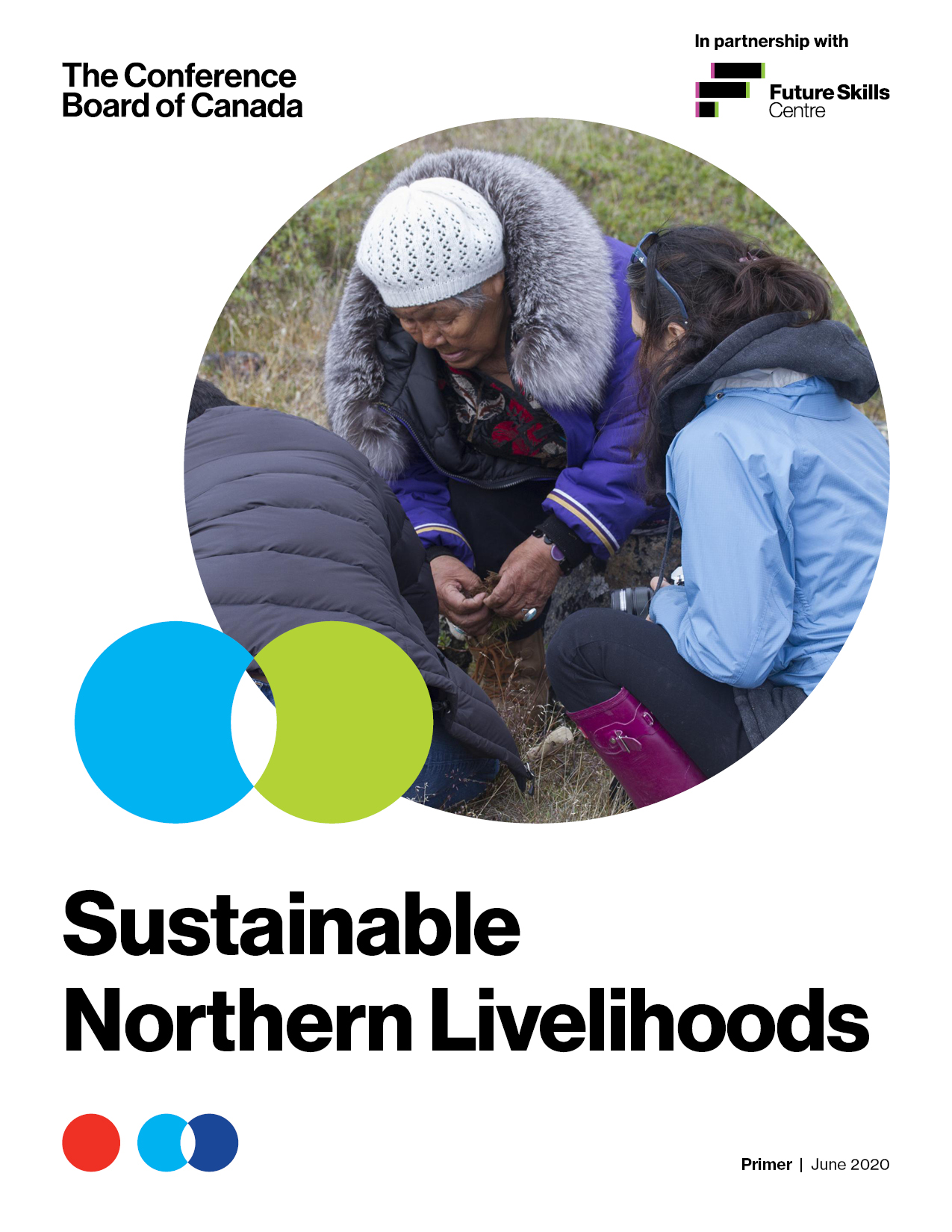
Northern Livelihoods
How can we close employment and income gaps in Inuit Nunangat?

Français • March 27, 2020
Canada’s North is booming. But not all in the North are seeing benefits.

In Canada, there are consistent gaps in both employment and income between Indigenous and non-Indigenous populations.
These gaps aren’t uniform, either. Between on-reserve First Nations, off-reserve First Nations, Inuit, and Métis, as well as between men and women, noticeable differences exist.
This is holding back economic growth and hurting economic reconciliation. And despite Canada’s North leading the country in economic growth, these disparities are most acute for Inuit in Inuit Nunangat.
Inuit are one of three distinct Indigenous Peoples in Canada. Over 47,000 Inuit—73 per cent of the over 65,000 Inuit in Canada—live in Inuit Nunangat, the Inuit homeland.
Inuit Nunangat spans four Inuit land claim regions:
- Inuvialuit Settlement Region (Northwest Territories)
- Nunavut
- Nunavik (Northern Quebec)
- Nunatsiavut (Northern Labrador)
Inuit Nunangat

On behalf of the Future Skills Centre, The Conference Board of Canada is researching ways to solve employment and income gaps in Inuit Nunangat through inclusive growth.
What is inclusive growth?
Inclusive growth is when the benefits of economic growth are fairly distributed across society. It creates opportunities for all.
Why is inclusive growth important?

Equality
Economic inequality is an alarming global problem, and it’s rising.
Inclusive growth ensures equality of opportunity and equity are part of the goals of economic growth.

Demographics
Canada’s overall population is aging, but our Indigenous population is young.
While the Canadian workforce is aging out, the Indigenous workforce is aging into the labour market.

Economics
Closing employment and income gaps makes economic sense.
Canada could add $27.7 billion to the economy annually, according to the National Indigenous and Economic Development Board.

Reconciliation
Indigenous Peoples need to participate fully in—and benefit from—the North’s economic growth.
This is critical to answering the Truth and Reconciliation Commission’s call for economic reconciliation.

The divide
Just how big are the education and employment gaps?
In Inuit Nunangat, the median income for Inuit is nearly $70,000 less than the median income for the non-Indigenous population.
Median income of Inuit and Non-Indigenous populations
For all of Canada, the gap in the median income for people aged 15 and over between the Inuit population and the non-Indigenous population is around $10,000.

Sources: Statistics Canada; Inuit Tapiriit Kanatami.
Across the four regions of Inuit Nunangat, Inuit are more likely than non-Indigenous workers to be employed in low-skilled and lower-paying jobs. This widens the income gap. Another important disparity is the level of education attained by Inuit and non-Indigenous workers.
Inuvialuit Region
Distribution of workers in Inuvialuit Region working full-time, full-year, by education level
(percentage of workers)

Source: Statistics Canada, Table 98-400-X2016357.
Nunavut
Distribution of workers in Nunavut working full-time, full-year, by education level
(percentage of workers)

Source: Statistics Canada, Table 98-400-X2016357.
Nunavik
Distribution of workers in Nunavik working full-time, full-year, by education level
(percentage of workers)

Source: Statistics Canada, Table 98-400-X2016357.
Nunatsiavut
Distribution of workers in Nunatsiavut working full-time, full-year, by education level
(percentage of workers)

Source: Statistics Canada, Table 98-400-X2016357.
Higher rates of unemployment for Inuit also contribute to overall income disparities.
Labour force status for people 15 and older in Inuit Nunangat

Source: Statistics Canada, Table 98-400-X2016266.

But labour force data only tell part of the story.
What are the unique circumstances that affect employment and income of Inuit?
To fully understand how to boost inclusive growth in Inuit Nunangat, we need to understand two connected concepts:
The economy in Inuit Nunangat is mixed.
- A mixed economy includes both market and land-based economies.
- Activities in the mixed economy include traditional subsistence activities—hunting, fishing, gathering wild plants, and creating art and handicrafts—as well as formal employment.
- Traditional activities have both cultural and economic significance. These activities are unique to each area, and play important roles in attaining food security, health, and well-being.
- A mixed economy helps communities adapt. Northern workers are navigating socio-economic disparity and the unstable labour market by interweaving traditional and market-based activities.
- Participation in the traditional economy is highest in Inuit Nunangat. According to Statistics Canada, 84% of Inuit regularly engage in harvesting and handicraft activities.
A sustainable livelihood is more than a job.
- It includes the skills, physical and social resources, and activities that enable individuals and families to meet their material and socio-cultural needs and contribute to future well-being.
- Sustainable livelihoods are specific to geographic and social contexts.
- A sustainable livelihood incorporates a sense of identity and belonging. It gives the chance to thrive and prepare for the future. It enables economic self-determination, and is a vital part of achieving inclusive growth.
Where do we go from here?
We are The Conference Board of Canada’s Indigenous and Northern Communities team.
During our multi-year project on behalf of the Future Skills Centre, we will:

Explore the link between traditional and market economies in Inuit Nunangat, and examine how both economies can foster inclusive growth.

Identify Inuit visions of sustainable livelihoods in Inuit Nunangat and the pathways to pursue them.

Inform community-based approaches to skills development and training.

Research ways to leverage traditional skills in order to take advantage of new opportunities in Inuit Nunangat’s mixed economy.

Find out what it will take for policy-makers and industry to support sustainable livelihoods as a means of addressing gaps in employment and income.

Stay in the loop. Access our Future Skills Centre research projects here.
FSC partners




The responsibility for the findings and conclusions of this research rests entirely with The Conference Board of Canada.

